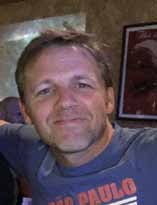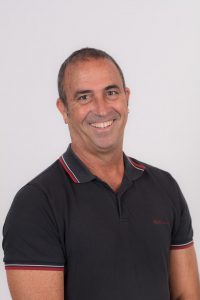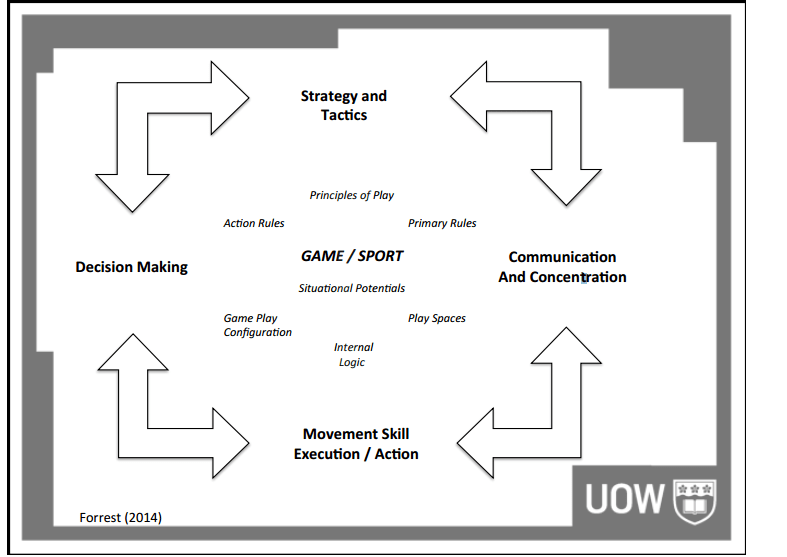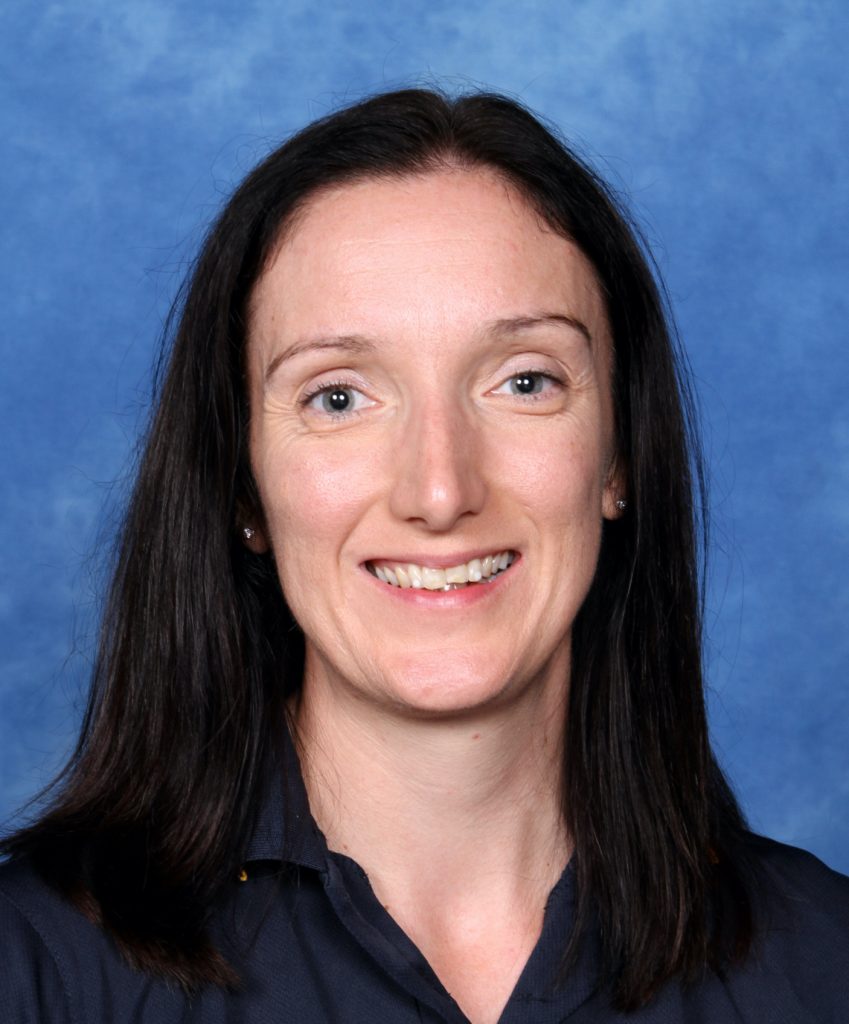Stop calling it prac .... It's physical education!
Reflections by Clare Roden, Vice President
I had the privilege to spend two days recently with a group of 10 passionate Primary and Secondary PDHPE teachers discussing what they thought encompassed the idea of quality physical education and what the hurdles were to achieving this in every school in NSW. They are the ACHPER NSW PE Pioneers.
The two days were facilitated by Janice Atkin (ACHPER NSW Professional Learning Officer) who offered a blank canvas on the first day for the participants to put together a professional learning program that would support the teaching of quality physical education in NSW schools. This gave the participants the permission to think outside the box and led to some fantastic professional discussions about how ACHPER NSW could best support our colleagues in delivering quality physical education in schools.
We were privileged to be joined by Greg Forest (Academic Program Director, Health and Physical Education at the University of Wollongong) and Gareth Long (Director of Program Innovation and Development, Australian College of Physical Education) who challenged us from an academic perspective to consider what physical education in schools has looked like in the past and what it could look like into the future.

Gareth Long – ACPE

Greg Forest – UOW
Gareth opened his presentation by opening a can of worms. He first challenged us to question the reasoning behind why we refer to our physical education lessons as “prac”.
He shared a quote from Croston and Hills, 2017 which states:
“…it has been well documented that PE became, and continues to be, dominated by team games.”
The consequence of this is that PE is viewed by many stakeholders in schools as simply an opportunity for students to be active – hence the label “prac”. It was cause for reflection by all of the participants with many admitting they have been guilty of calling PE lessons prac.
Gareth went on to share a conversation he had with his son around why he loved the video game Rocket League.

His son very quickly responded with the following list:
- Friends play it – we can chat while we’re playing
- We get to design our own cars and customise the game
- Lots of different modes you can play – get to choose how to play
- You can power up
- You can take on challenges to get rewards
- The better you go the more you rank up (different levels to progress through
- You can choose your own skill to master (map codes)
- You get to play against people on the same rank
- Its only 5 minutes and then you get to start a new game
- There’s seasons and you get to trade
This raised the question about the reasons for the popularity of video games with young people. What could we learn from that as physical educators create learning experiences in physical education that engage our students as much as video games do?
So many questions came out of Day 1.
- How can we build capacity in PDHPE teachers to effectively educate students in a movement context and build their confidence and level of success in the same way we would in a classroom setting?
- How can we make PDHPE inclusive for everyone?
- What are the barriers to PDHPE teachers delivering quality physical education lessons?
- How do we change the perception of physical education in our schools to be seen as having the same level of academic integrity as any other subject?

Greg’s passion is Grammar of Games and he presented this to us on the first day and his ideas stayed with us for the next two days.
He consistently challenged everyone’s thinking and questioned how we could do things differently and the reasons behind current practice. The underlying idea of Grammar of Games is that students are taught grammar so they can construct and use language in a variety of situations, so why do we not do this in physical education. Again, this provided us with more questions to consider.
- How can we effectively teach the key concepts of; communication, decision making and strategies and tactics which would allow students to successfully engage in any movement context?
- If we continue to teach a sport per term are we in fact delivering a coaching session to build skill and technique in our students rather than equipping them to be lifelong physical activity participants?
- Are we setting many of our students up for failure as they have not had the experiences in sport and physical activities to develop the foundational knowledge to be successful in a variety of movement contexts?
The syllabus outcomes and content provide clear guidance about the evidence we need to collect in order to make professional judgements about students’ level of achievement. The syllabus does not prescribe the movement contexts that we must do and leaves it open for interpretation for each school context.
When you reflect on your current PE program does it pass muster?
- What physical activity do your students engage in?
- Do you provide them with the opportunity to engage in a wide variety of different movement contexts or just stick to the more traditional sports?
If we are assessing students on their technical ability does this in fact advantage those who play that sport outside of school as well as potentially not providing opportunities for all students to demonstrate their capabilities in relation to what the syllabus outcomes are addressing. This led us then to the question; what is the purpose of a unit of work focused on a movement context? Is it to provide students with the foundational knowledge to engage successfully with the outcomes and content in physical education as suggested by Greg’s Grammar of Games themes OR is to understand and practice the specific technique, skills and abilities of that sport?
Having come to the collective decision that Greg’s concept of Grammar of Games was something that is possibly not always considered by PDHPE teachers; how do we support our colleagues to effectively change their practice and the practice of those within their faculty?
Janice challenged the participants to think outside the box and develop a teaching and learning activity that would address a specific piece of syllabus content and provide evidence of learning in relation to the outcome. A variety of different interpretations of the outcomes and the content were demonstrated. Of course this led to more discussion and we considered the challenges that all PDHPE teachers across NSW could face in relation to changing current practice and how they could be supported to find solutions to these challenges.
By the end of the two days we were exhausted, excited and enthused about what’s possible. Having started with a blank canvas on Day 1 the group of PE Pioneers ended Day 2 with a clear direction for some professional learning around quality physical education.
We had;
- created a draft definition of what quality physical education lessons should look like
- discussed how to build capacity in teachers to confidently engage with the language of the syllabus outcomes and content
- looked to provide a clear process to effectively assess our students through formative assessment
- considered what guidance teachers may need to effectively use questioning and observation to make judgements about students’ performance in relation to the outcomes
- explored how we can plan to ensure that all students are included in every lesson.
The next step for the PE Pioneers is to develop professional learning activities that address the key themes/ideas that we highlighted over the two days. We will then work with other passionate teachers in piloting and refining these professional learning activities during Term 2. We anticipate the roll out of these professional learning activities to begin in Term 3 – and by this time we hope to have the PL fully accredited under NESA’s new accreditation processes.
Reflecting on your practice:
- what is the one thing that would like to know more about to support your delivery of quality physical education in your school context?
Have you got a suggestion for how ACHPER NSW can support the profession to build capacity to deliver quality and engaging physical education lessons that engage, motivate and physically educate ALL students? Add a comment to this post and we will add all suggestions to our list of ideas as we begin the building mode.

About the author
Clare is a highly experienced PDHPE teacher, Head Teacher, HSC Marker and presenter, who has worked in schools for 15 years. She has taught and developed resources and professional learning for PDHPE 7-10, elective PASS and Stage 6 PDHPE and CAFS for teachers across NSW. She has been a Professional Teachers’ Council (PTC NSW) representative on NESA reference groups for PDHPE Curriculum development K – 12. Clare is currently working as a Sessional Lecturer for Health and Physical Education (Primary and Secondary) and Pedagogy (Secondary) within the School of Education at the University of Wollongong.


